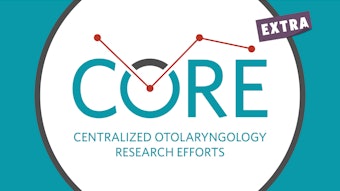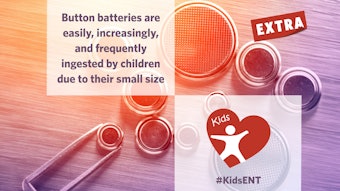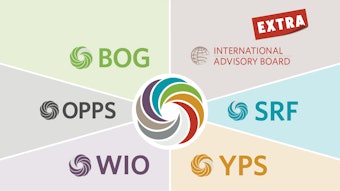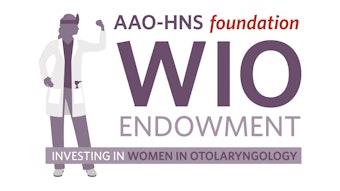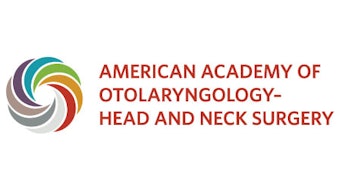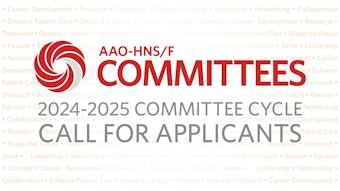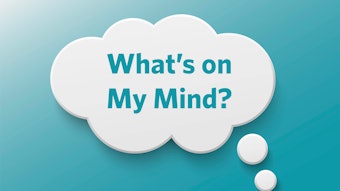Expanding Real-World Outcomes in Adults with Hearing Loss
To better understand the real-world effects of hearing loss on patients’ lives, it is imperative that we expand our outcome assessments in this patient population.
Aaron C. Moberly, MD, Theodore McRackan, MD, MSCR, Terrin N. Tamati, PhD, AAO-HNS Hearing Committee
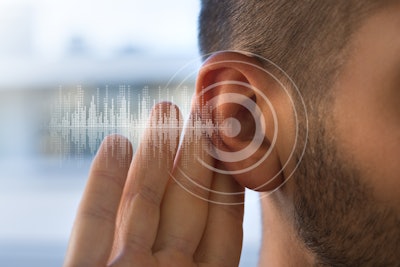
Specifically, the most commonly used measures to assess outcomes after hearing rehabilitation with a hearing device are aided threshold testing and speech recognition testing using words or sentence materials. This limited clinical battery is used despite consistent, growing evidence that these measures are only weakly correlated—if at all—with patient-reported outcomes of functioning and quality of life1,2 suggesting that our clinical measures are not representative of patients’ real-world experiences and needs.
To better understand the real-world effects of hearing loss on patients’ lives, it is imperative that we expand our outcome assessments in this patient population. Moreover, this expansion is necessary as we attempt to deepen our understanding of the broader benefits and limitations of our rehabilitative treatments. This article provides a general framework of several areas of function that we should consider, examples of such measures, and thoughts on their clinical implementation.
Communication Abilities
Although aided thresholds and word or sentence recognition are the most common assessments used to measure outcomes with hearing devices, these provide a very limited glimpse into the communication abilities of our patients. Aided thresholds provide a very rough measure of hearing ability but tell us nothing about how people process auditory information beyond the cochlea.
Clinical speech recognition tests typically present “idealized lab speech,” consisting of isolated words or relatively simple sentences spoken by one or a small number of talkers using a clear voice with no discernible accent, with the patient asked to immediately repeat back the word or sentence as accurately as possible. Noise can be added, typically using multi-talker babble, to provide a mixture of energetic masking (masking due to the noise physically overlapping with the signal) and informational masking (because the noise is speech, which provides cognitive interference for the listener). However, the options for speech materials presented and noise conditions in the clinic are fairly limited, which provides a restricted understanding of how well individuals can access and use information in the speech signal.
Scoring speech recognition accuracy alone serves as an endpoint measure of the ability to process speech, but it does not provide insight into the language and cognitive functions that contribute to understanding speech.3 It is important to reiterate that these speech recognition accuracy tasks, whether using words or sentences presented in quiet or background noise, poorly correlate with patients’ self-reported real-world communication abilities.
It is also unclear how well these measures of speech recognition inform us as to the ability of our patients to comprehend speech; that is, to meaningfully engage with and understand the meaning of the utterance, which is generally the goal of interpersonal communication. Measures of speech comprehension have been developed, using questions asked after listening to narrative passages,4 but these can be long and challenging to score. A simpler alternative has been developed called the Sentence Verification Task,5 during which a patient listens to a sentence and determines if it is true or false. Response times on this test can also serve as an assessment of listening effort.
Current methods of assessing speech recognition also provide a limited understanding of how well listeners can make use of the “indexical properties” of speech; that is, the information within the speech signal that “indexes” information about the talker, such as gender, accent, age, speaking style, and even emotional status.6,7 Efforts continue to be made to incorporate variability in indexical properties in speech recognition materials, such as through development of the Perceptually Robust English Sentence Test Open-set,8 or through direct testing with measures of gender discrimination or accent categorization, which are likely relevant to everyday communication functioning.
Cognition
With the growing acceptance of the linkage between hearing loss and cognitive functioning, it is increasingly relevant for us to consider the effects of hearing loss and hearing treatment on cognition. Although some clinics are incorporating cognitive screening measures, such as the Mini-Mental State Examination (MMSE) or the Montreal Cognitive Assessment (MoCA), these measures were developed only to serve as screening examinations to identify individuals at risk for cognitive impairment but really were not designed to track changes over time. Moreover, these measures are sensitive to the effects of audibility, which has led to development of modified versions for individuals with hearing loss, such as the Hearing Impaired MoCA (HI-MoCA).9
The ability to effectively use auditory input for complex cognitive processing is likely relevant to the ability to navigate the everyday listening environment with hearing loss. For example, the Listening Span task10 is an auditory working memory task that tests a listener’s ability to hear a series of sentences and remember the final word of each sentence for later recall. A similar task, the Sentence Final-Word Identification and Recall task, also measures auditory working memory and listening effort.11 These measures are likely relevant to everyday communication and cognitive functioning, but they tend to be more challenging to conduct and score, limiting their clinical application.
Patient-Reported Outcomes
Clinical assessments of audibility and speech recognition have been found to only weakly relate to scores on patient-reported outcome measures.1 This finding has helped support the development and implementation of measures that better reflect the self-reported functional abilities of patients. For example, the Cochlear Implant Quality of Life (CIQOL)12 was developed with extensive input from individuals with hearing loss and resulted in six domains of functioning deemed most relevant to outcomes: communication, emotional, entertainment, environment, listening effort, and social functioning. Similarly, the older Speech, Spatial and Qualities measure (SSQ)13 has gained popularity in clinical settings, especially with regard to spatial hearing after unilateral or bilateral hearing device fitting.
Incorporation of patient-reported outcome measures can provide an efficient, more holistic view of patient outcomes not captured in typical clinical assessments. However, it is important to select patient-reported outcomes that are validated for the patient population in which the measures are being applied. In addition, it is important to consider the impact of patient personality factors, motivation, and other health factors when interpreting patient-reported outcomes.
Feasibility of Clinical Implementation
A major concern that arises when considering the expansion of outcome measures in individuals with hearing loss is the clinical feasibility of doing so. A typical clinical scenario is a 30-minute diagnostic visit with the audiologist, followed by a 15-minute appointment with the otolaryngologist or otologist. This short period of time limits the ability to provide a comprehensive assessment of the functional abilities of our patients. Thus, we must be selective in the measures chosen and identify those that are most high yield in providing information that is complementary to the standard clinical battery.
Perhaps a better approach is to take this testing out of the clinic entirely and allow our patients to perform adjunctive testing at home or even in the clinic waiting room. For example, patient-reported outcome measures have been successfully obtained for research purposes through digital patient interfaces such as the Research Electronic Data Capture (REDCap) system.
Similarly, remote testing platforms are continually being developed to allow individuals to perform some forms of auditory testing at home using their own smartphones or computers.14 Author, Terrin N. Tamati, PhD, is currently completing a study to assess the ability to remotely test adult cochlear implant users on an array of speech recognition, speech comprehension, and indexical processing measures using an online testing platform. Ideally these types of measures could be incorporated into an app-based platform that would be easily accessible to clinicians and patients. As these remote-testing approaches continue to evolve, we will be able to develop a more comprehensive profile of the real-world functioning and rehabilitative needs of our patients with hearing loss.
References
- McRackan TR, Bauschard M, Hatch JL, Franko‐Tobin E, Droghini HR, Nguyen SA, Dubno JR. Meta‐analysis of quality‐of‐life improvement after cochlear implantation and associations with speech recognition abilities. The Laryngoscope. 2018 Apr;128(4):982-90.
- Dornhoffer JR, Meyer TA, Dubno JR, McRackan TR. Assessment of hearing aid benefit using patient-reported outcomes and audiologic measures. Audiology and Neurotology. 2020 Jul 17;25(4):215-23.
- Moberly AC, Castellanos I, Vasil KJ, Adunka OF, Pisoni DB. “Product” versus “process” measures in assessing speech recognition outcomes in adults with cochlear implants. Otology & Neurotology: official publication of the American Otological Society, American Neurotology Society [and] European Academy of Otology and Neurotology. 2018 Mar;39(3):e195.
- Sommers MS, Hale S, Myerson J, Rose N, Tye-Murray N, Spehar B. Listening comprehension across the adult lifespan. Ear and Hearing. 2011 Nov;32(6):775.
- Pals C, Sarampalis A, Beynon A, Stainsby T, Başkent D. Effect of spectral channels on speech recognition, comprehension, and listening effort in cochlear-implant users. Trends in Hearing. 2020 Mar;24:2331216520904617.
- Rodman C, Moberly AC, Janse E, Başkent D, Tamati TN. The impact of speaking style on speech recognition in quiet and multi-talker babble in adult cochlear implant users. The Journal of the Acoustical Society of America. 2020 Jan 1;147(1):101-7.
- Cannon SA, Chatterjee M. Age-related changes in voice emotion recognition by post-lingually deafened listeners with cochlear implants. Ear and Hearing. 2022 Mar;43(2):323.
- Gilbert JL, Tamati TN, Pisoni DB. Development, reliability, and validity of PRESTO: A new high-variability sentence recognition test. Journal of the American Academy of Audiology. 2013 Jan;24(01):026-36.
- Lin VY, Chung J, Callahan BL, Smith L, Gritters N, Chen JM, Black SE, Masellis M. Development of cognitive screening test for the severely hearing impaired: Hearing‐impaired M o CA. The Laryngoscope. 2017 May;127:S4-11.
- Doherty KA, Desjardins JL. The benefit of amplification on auditory working memory function in middle-aged and young-older hearing impaired adults. Frontiers in Psychology. 2015 Jun 5;6:721.
- Ng EH, Rudner M, Lunner T, Pedersen MS, Rönnberg J. Effects of noise and working memory capacity on memory processing of speech for hearing-aid users. International Journal of Audiology. 2013 Jul 1;52(7):433-41.
- McRackan TR, Hand BN, Velozo CA, Dubno JR, Cochlear Implant Quality of Life Consortium. Development of the Cochlear Implant Quality of Life (CIQOL) item bank. Ear and Hearing. 2019 Jul;40(4):1016.
- Gatehouse S, Noble W. The speech, spatial and qualities of hearing scale (SSQ). International Journal of Audiology. 2004 Jan 1;43(2):85-99.
- Shafiro V, Hebb M, Walker C, Oh J, Hsiao Y, Brown K, Sheft S, Li Y, Vasil K, Moberly AC. Development of the basic auditory skills evaluation battery for online testing of cochlear implant listeners. American Journal of Audiology. 2020 Sep 18;29(3S):577-90.

